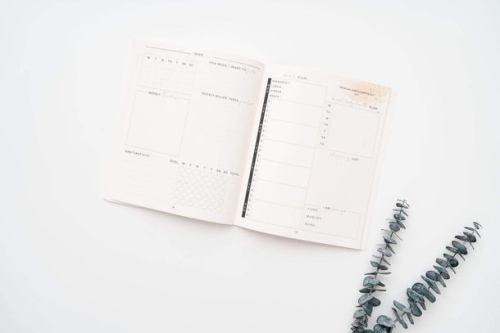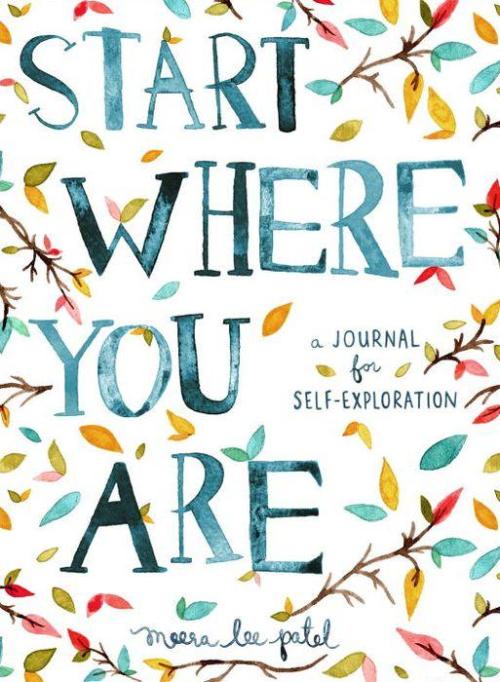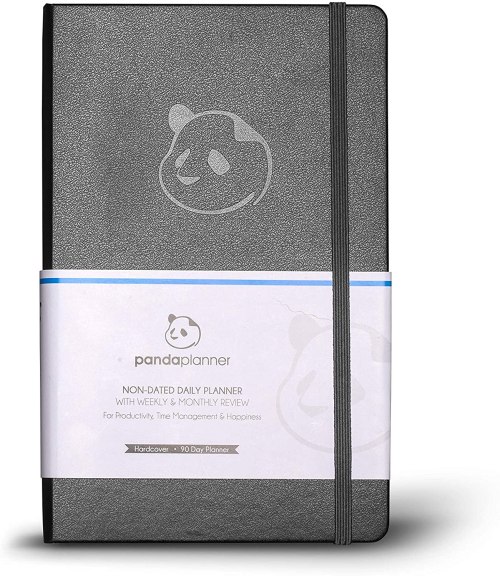Our editors independently select these products. Making a purchase through our links may earn Well+Good a commission
Working Toward a New Goal? Mental-Health Experts Suggest This Type of Journaling
Here are the seven best intention-setting journals, plus advice from mental-health experts and psychologists on how to put them to good use.

At one point or another, an authority figure in your life has likely recited the intuitive benefits of goal-setting. (If you don’t know where you’d like to go, how can you expect to get there?) And it’s possible you’ve encountered the meditative, mind-clearing joys of journaling. But when you combine the two and put goals to paper through a routine practice of intention-setting journaling, you’re essentially writing your way to a positive conclusion. To get there, though, it’s often helpful to use intention-setting journals, the best of which are outfitted with clear prompts designed to keep your personal storyline moving forward.
Experts in This Article
Cheyenne Bryant, PhD, is a psychology expert, life coach, president of NAACP branch #1069, founder of Dr. Bryant Institute and Dr. Bryant Foundation, author of the award-winning book Mental Detox, and motivational speaker.
Liv Bowser is a certified meditation and mindfulness trainer, certified yoga teacher, and founder of the mental fitness company Liberate. The platform’s virtual programs and classes are designed to equip companies with tools to alleviate burnout, decrease stress, and boost morale.
licensed psychologist with doctorate in counseling psychology in New York
While goals tend to be more specific and concrete than intentions—you might intend to be more present with your partner and have a goal to do a date night with them every Friday, for instance—both can play a role in an intention-setting journal. But, in particular, pushing yourself to find words for the naturally more nebulous intentions can help you ensure they’re aligned to serve tangible goals, whether short- or long-term. “Intentions help create more clarity and confidence around goals and connect us to the present moment,” says certified meditation and mindfulness trainer Liv Bowser, founder of mental-fitness company Liberate. As an example, regularly setting an intention around calmness would directly support a goal to spend an hour of every Sunday reading or meditating.
“Intentions help create more clarity and confidence around goals and connect us to the present moment.” —Liv Bowser, founder of mental-fitness company Liberate
Given that intention-setting journals double as a physical record of your thoughts, they can be a helpful tool for tracking change over time. “You may notice an evolution of your intentions,” says psychologist Snehal Kumar, PhD. “They might change to be more aligned with our current world, or they might become more nuanced over time. Or, perhaps you notice that the intention that remains the same is the one that’s toughest to embrace, and you may need to practice it with an accountability partner or friend, or chat about it with a therapist,” she says.
In any case, writing down intentions has the powerful effect of narrowing your focus toward them, says psychology expert and life coach Cheyenne Bryant, PhD. “And what you focus on magnifies or creates a vibration,” she says. That just makes you all the more likely to embody the intention and, in turn, put in the work or make the change necessary to achieve a related goal.
How to effectively use an intention-setting journal
The short answer? There’s no wrong way and many right ways to use an intention-setting journal, as the type, timing, and cadence of intentions is super-personal. With that variability in mind, Dr. Kumar suggests tailoring your practice to what seems the most appealing to you from the get-go. “For example, if daily journaling sounds miserable, consider writing once a week or every few days. While some folks prefer unstructured time for journaling, others like setting aside five minutes,” she says. “Do what helps you get started, not what you idealize as the ‘right’ way.”
Though many of the best intention-setting journals have clear and helpful prompts to get your writing juices flowing, if you’re looking for somewhere to start, Bowser suggests focusing on a single word that you’re letting go of, and one word that you’re calling in. “For example, you might write, ‘Today, I’m letting go of anxiousness and calling in calm,'” she says. But before you even put pencil or pen to paper, Dr. Bryant recommends sitting quietly for about 10 minutes, if you can, in silence or with calm music, or engaging in a short meditation practice, so that you’re fully present by the time you go to journal.
Here are the 7 best intention-setting journals for doing this mindfulness practice

Ostrichpillow Self-Care Journal — $35.00
If your brain tends to group your various wins and… “needs-improvement” areas into specific buckets like sleep or exercise (we’re looking at you, type-A’s), you’ll vibe with this self-care journal, which does basically that in paper form. Daily and monthly check-ins make it easy to organize your reflections and intentions, and a simple monthly exercise helps illustrate the parts of your life that are thriving and the ones that could use a little extra love.

Papier My Wellness Journal — $33.00
Blending intention-setting with gratitude, this do-it-all journal has a satisfying cadence of forecasting and reflecting. While the 12-week overview does contain spreads for daily notes, it also includes engaging prompts sprinkled throughout to track your mood, attitude, and perspective, as well as space to note “wish lists” and “feel-good goals” to keep your eye on the prize.

Silk+Sonder Dateless Self Care Planner — $25.00
No matter how much you believe in the powers of intention-setting journaling, at one point or another, it’s bound to feel a little like an extra chore on your list of to-dos. If you can relate, you’ll love this dateless self-care planner from Silk+Sonder, which is peppered with so many different engaging activities, it’ll never feel the slightest bit boring. You’ll find creative reflection exercises and things like self-care bingo and coloring pages amid themed journal prompts and mood trackers.

Start Where You Are: A Journal for Self-Exploration
Gorgeous hand-lettering and images from beloved illustrator Meera Lee Patel make this journal as lovely to look at as it is to use. Because the visuals are often part of the prompts, the format is more fluid and open-ended than some of the organization-focused journals in this list—perfect if you prefer a gentle nudge and lots of space to write stream-of-consciousness style. Should you find yourself stuck at any point, just flip a couple pages to find inspirational quotes from artists, authors, and other visionaries.

Panda Planner — $20.00
Okay, this Panda Planner is admittedly more of a planner than a journal—and the format homes in on hard-and-fast goals more directly than airier intentions—but if you appreciate the structure and focus of a morning check-in, a midday to-do list, and an end-of-day review, you’ll really click with it. Additional pages for weekly and monthly goals and reflections earn it a spot on this list as a hybrid of an intention-setting journal and an agenda.
ThirdLove Just Launched Bras That Help Balance Your Body Temperature—Here’s Why That’s a Game-Changer for Women in All Life Stages

These Are the Only Types of Underwear You Should Be Wearing, According to Gynecologists

These Are the Summer Essentials You Should Bring With You Every Time You Leave the House, According to a Derm and an RD


Lavendaire Weekly Reset Planner — $40.00
As its name suggests, Lavendaire’s planner is organized weekly with space to outline goals, self-care reminders, and key priorities. So, if you begin each Monday with intention-setting energy that tends to fizzle by Friday, this journal is ideal for staying on track. Prompts that help you celebrate your wins, tap into gratitude, and draw lessons from challenging moments at the end of each week also put you in the best position to start the next one on a high note.

The Five-Minute Journal — $25.00
If the idea of a long-term goal feels overwhelming, consider a simple daily intention. This Instagram-famous journal is as straightforward as its name entails, with each day’s entry including short prompts for a daily affirmation, what you’ll prioritize that day, and what you’re feeling grateful for, plus an inspiring quote. It’s broken up into a morning routine and a nighttime routine, both of which are surprisingly speedy for how much of a positive mental boost they offer.
Looking to hit refresh on your healthy habits this January? Check out our full 2022 ReNew Year program for expert-led plans for sustainable eating, exercise, and self-care routines.
Sign up for the Well+Good SHOP Newsletter
Get exclusive deals on wellness, beauty, fitness, and food products that have been hand-picked by our editors.
Got it, you've been added to our email list.







